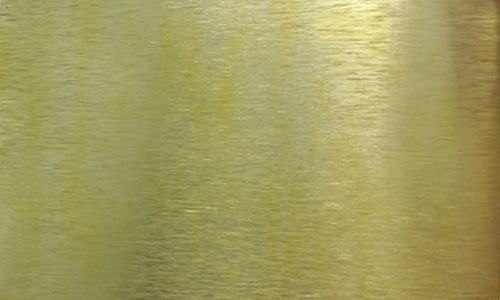Anodizing process for brushed aluminium sheet
July 23, 2020
Anodizing is an additional process for a brushed aluminium sheet. In other words, not all brushed sheets are anodized unless required by clients. Wire drawing and anodizing are two different aluminum plate surface treatment processes. Wire drawing is a manufacturing process in which an aluminum plate is forced to pass through the mold under the action of external force, during which shallow or deep lines are drawn on the plate sheet surface. The process falls on three parts: deesterification, sand mill, and water washing. Anodizing is to place an alu sheet (brushed, mill finished etc.) in the corresponding electrolyte as the anode. Such a process is constituted of degreasing, etching, neutralization, anodizing, coloring and sealing. Extra process entails extra costs. Therefore, purchasers of brushed aluminium sheet metals are advised to make it clear whether you want the plates anodized or not while communicating with your suppliers. The function of anodizing is to improve service life of the brushed aluminum plates. You should figure out whether you need it or not.

The coloring process of anodized brushed aluminium sheets falls on three methods.
Inorganic pigment coloring is mainly physical adsorption, that is, inorganic pigment molecules are adsorbed on the surface of the micropores of the film for filling. The color tone of this method is not bright, and the bonding force with the substrate is poor, but the light fastness is better.
The coloring of organic dyes has a complicated mechanism, and it is generally believed that there are physical adsorption and chemical reactions. The chemical combination of organic dye molecules and alumina is as follows: alumina forms a covalent bond with the phenolic group on the dye molecule.
Electrolytic coloring is to put anodized aluminum and its alloys in an electrolyte containing metal salts for electrolysis. Through an electrochemical reaction, the heavy metal ions entering the micropores of the oxide film are reduced to metal atoms.
How to check anodizing quality of an aluminium brushed plate?
1. Film thickness: use a gauge to measure the film and see if it’s as thick as listed by your supplier.
2. Coloring effect: soak a sample piece of aluminium brushed sheets in an organic solvent (generally alcohol) and check whether there is discoloration. If yes, it means lack in coloring process or that the color has been dyed simply, not anodized.
3. Hardness: use an ordinary (not anodized) sharp aluminium piece to scratch the surface of an anodized brushed aluminium sheet. If scratches appear on the surface, it proves that there is a problem with the hardness.
Anodized brushed aluminum sheets are widely used in transportation facilities, signs and signs, building curtain walls, packaging, air conditioners, refrigerators and freezers, electronic appliances, solar energy, cosmetics, automotive wheels, lighting, pipe insulation, aerospace and so on. If you need to learn more information, welcome to contact us!


 Nydia
Nydia
 Sales Manager
Sales Manager